Rank Species | Family Papilionidae Subgenus Chilasa Higher classification Papilio | |
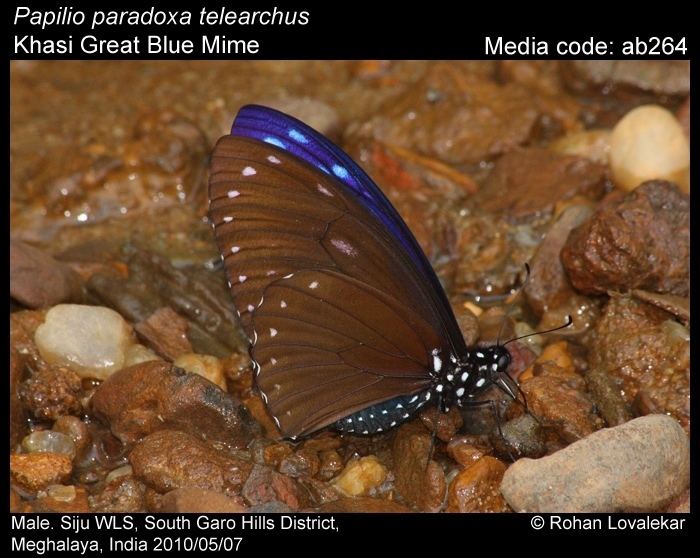 | ||
Similar Papilio slateri, Papilio, Butterfly, Papilio alcmenor, Swallowtail butterfly | ||
Papilio (Chilasa) paradoxa, the great blue mime, is a swallowtail butterfly found in India and parts of South-East Asia. The butterfly belongs to the mime subgenus, Chilasa, of the genus Papilio (black-bodied swallowtails). It is an excellent mimic of different species of Euploea (sub-family Danainae).
Contents
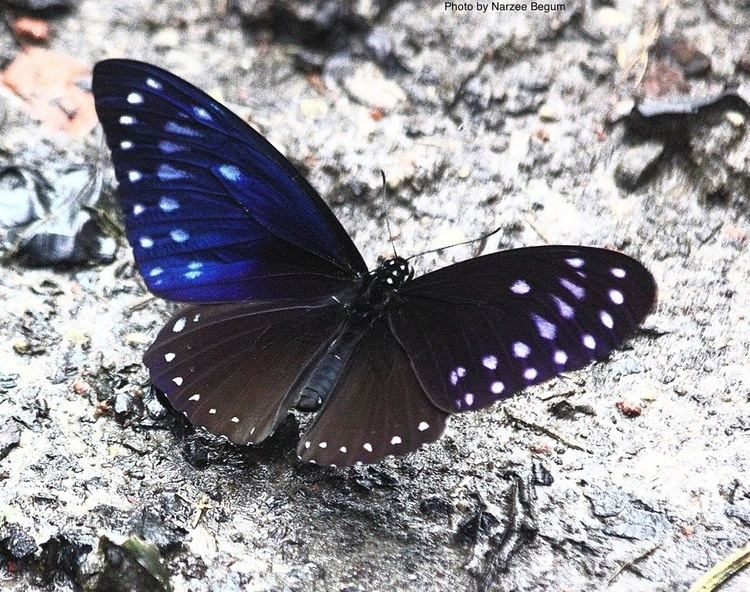
Description
From Charles Thomas Bingham (1905) The Fauna of British India, Including Ceylon and Burma, Butterflies Vol. 1:
Papilio paradoxus Race telearchus
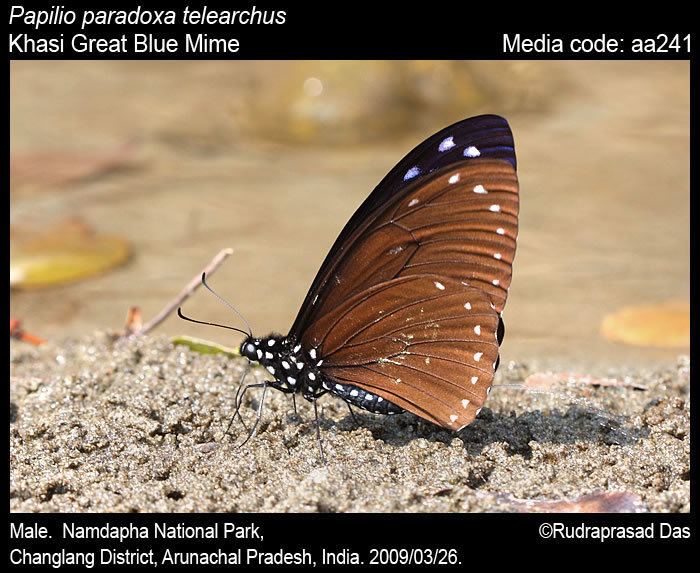
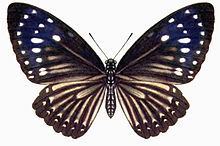
The second and rarer form of the female closely resembles the male, but is larger and paler, with the pale blue-glossed spots on the upperside of the forewing elongate and more prominent and the ground colour lighter than in the male.
Papilio caunus
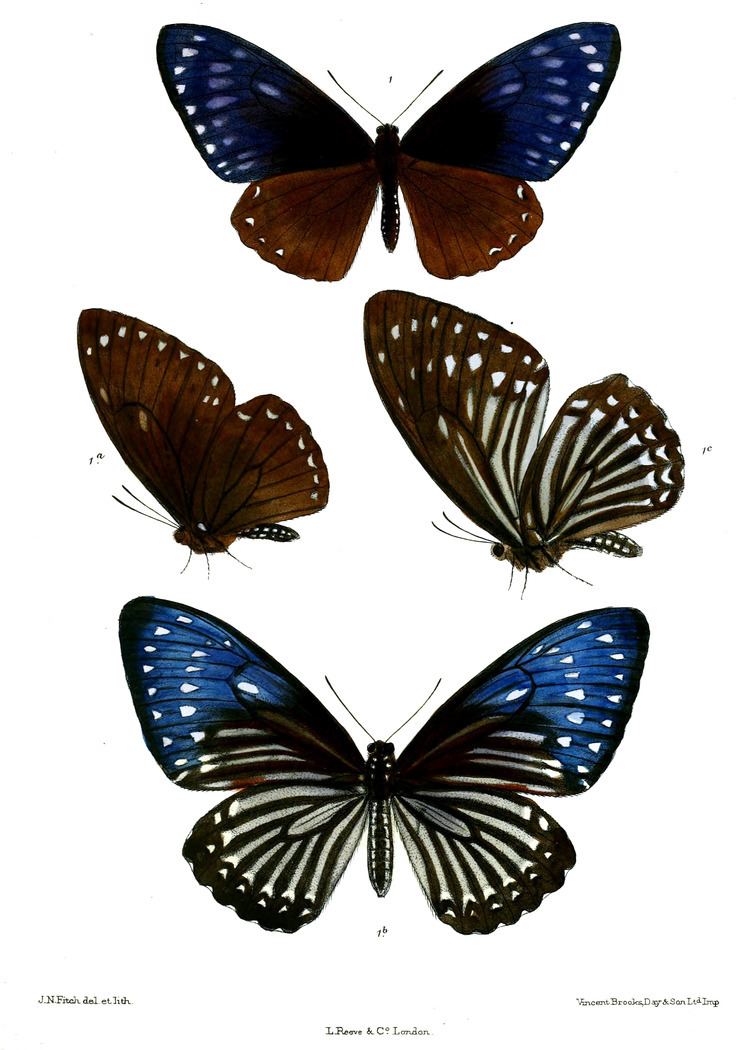
Race danisepa, Butler- Male. Upperside rich velvety brown shot with blue. Forewing: apical third of cell, four short streaks beyond in interspaces 4,5,6 and 9 and a subterminal series of spots curved inwards opposite the apex, bluish white. Hindwing: the cell, a series of streaks from the bases of interspaces 1 to 7 and an incomplete subterminal series of minute spots, white; the streaks in interspaces 4 and 5 short, those in the interspaces above and below gradually longer. Underside brown without the blue gloss; markings as on the upperside, but the subterminal markings on the hindwing complete. Antennae, head, thorax and abdomen black; beneath, the thorax and abdomen with a few white spots. Female. Resembles the male, but the blue gloss on both forewing and hindwing is more restricted, the ground colour paler brown, somewhat of a rich golden bronze, and the white markings are fuller and broader.
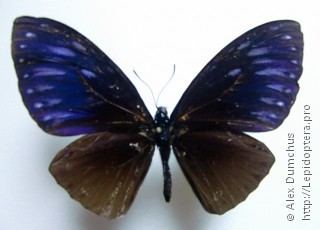
I first came across this magnificent butterfly on the Tannjah Pass, 1000 feet, over the Dawnat mountains in Tenasserim, and until I had caught and examined it, mistook it for an extraordinarily large speciment of Euploea rhadamanthus. It is apparently sometimes, notwithstanding its disguise, attacked and preyed upon by the Pigmy Falcon (Microhierax caerulescens), as in the nest-hole of a pair of these birds I once found the fragment of a forewing of a butterfly which was identified by the late Mr. de Niceville as belonging to this form of P. caunus.
Distribution
The butterfly is found in northern India (including Assam and Arunachal Pradesh), Bangladesh, and Myanmar. It is also found in southern China, Vietnam, Thailand, Laos, Kampuchea, peninsular and eastern Malaysia, Philippines (Palawan), Brunei and Indonesia (Sumatra, Banka, Nias, and Kalimantan).
Status
Never common but not known to be threatened. Considered rare in India by William Harry Evans and Mark Alexander Wynter-Blyth. Only one subspecies of the butterfly occurs in Indian territory, P. (C.) p. telearchus (Hewitson), which is protected by law in India.
Habitat
This is a forest species and is generally found in low elevations.
Mimicry
The typical form of the great blue mime mimics the striped blue crow (Euploea mulciber) in both sexes. There also occurs in India a form danisepa which mimics the magpie crow (Euploea radamanthus). Though the great mimes are easily distinguished when caught, in flight they very closely resemble the mimicked butterflies.
Habits
The flight of the mime mimics that of the species it resembles. It is fond of settling on damp patches.
